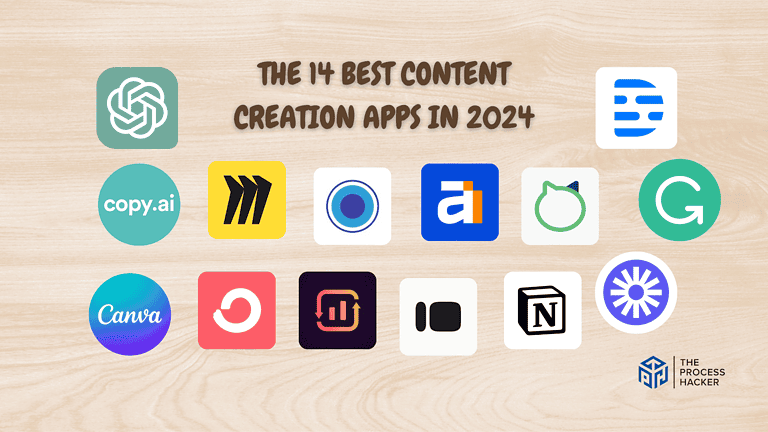How to Create Online Courses: A Step-by-Step Guide
While education is traditionally associated with the four walls of a classroom, the digital age has created a new type of learning: online courses and AI tools.
Online courses have become hugely popular. No longer constrained by geography or limited class sizes, more people aim to learn new skills and discover new passions on their own schedules.
But creating an online course from scratch can seem daunting—where does one start? In this comprehensive guide, we’ll walk through the entire process of designing, developing, and launching your first online course, from ideation to execution.
We’ll cover everything from deciding topics and learning objectives to designing interactive lessons, recording video lectures, and setting up a membership site step-by-step. Ultimately, even the most technologically challenged entrepreneurs will feel confident in their newfound online teaching abilities.
So whether you want to monetize your expertise or simply share your knowledge with the world, read on to discover how to create your online course from A to Z!
What is an Online Course?
An online course is a digital structured learning experience, usually through video lessons, text-based materials, quizzes, and interactive exercises. It’s a flexible and convenient way for students to learn at their own pace from anywhere in the world.
Online courses span various topics, from professional development skills like coding and marketing to creative pursuits like photography and music. They can be short and focused or comprehensive and in-depth.
What are Different Types of Online Courses?
When you’re ready to dive into online teaching, you’ll find several courses to choose from, each serving different needs and learning objectives. Here’s a breakdown to help you decide which type suits your expertise and audience best:
1) Starter Courses
These act as a jumping-off point for beginners, introducing them to a new field or skill. They provide foundational knowledge and get students excited about further exploration.
Think of them as the first step on a learning journey, offering a taste of what’s possible and sparking a desire to learn more. Starter courses are often shorter in duration and priced at a lower point, making them accessible to a broader audience.
2) Spotlight Courses
These focus on a specific aspect of a broader topic, offering detailed and specialized instruction. They’re perfect for individuals who want to master a particular skill or niche within a field.
If you have deep expertise in a specific area, a spotlight course allows you to share that knowledge in a focused way. These courses are more in-depth than starter courses, providing actionable strategies and tactics that students can implement immediately.
3) Signature Courses
These are comprehensive programs that guide students through a complete transformation. They provide in-depth knowledge, step-by-step frameworks, and support for achieving significant outcomes.
Signature courses are a great option if you’re ready to create a flagship product that showcases your expertise and delivers substantial value. They often include learning materials, community interaction, and personalized feedback to ensure student success.
No matter which type of course you choose to create, the key is to ensure it aligns with what your audience needs and how they prefer to learn. This approach not only maximizes the impact of your teaching but also enhances the overall learning experience, making it more enjoyable and effective for everyone involved.
Why Should You Create Online Courses?
Creating online courses offers several benefits, from sharing your passion to establishing yourself as an authority in your field. Let’s explore one of the most compelling reasons:
Has the potential for passive income
One of the most attractive aspects of online courses is their potential for passive income. Once you’ve created your course, it can be sold repeatedly without requiring direct involvement in each transaction. This means you can generate income while sleeping, traveling, or focusing on other projects.
Imagine waking up to find that several people have purchased your course overnight. That’s the beauty of passive income – your course works for you, even when you’re not actively working on it. It’s a way to leverage your expertise and time, creating a sustainable source of revenue that can grow over time.
Of course, building a successful online course requires upfront effort and dedication. You must create high-quality content, market your course effectively, and provide ongoing support to your students. But once you’ve established your course, the potential for passive income is significant.
With the right strategy and execution, your online course can become a valuable asset that generates revenue for years.
Establish yourself as an expert
When you create and teach an online course, you position yourself as an authority in your field. This is not just about presenting what you know; it’s about sharing your knowledge in a way that is accessible, engaging, and actionable for your audience. By effectively teaching something you are passionate about or skilled in, you increase your credibility and enhance your professional visibility.
Here are some key benefits of establishing yourself as an expert through online courses:
- Enhanced Credibility: Each course you create, and each student you help adds to your reputation as an expert. This can open doors to other professional opportunities such as consulting, speaking engagements, or book offers.
- Extended Reach: Online courses break down geographical barriers, allowing people worldwide to access your expertise. This global reach can significantly expand your professional network and audience base.
- Increased Impact: As an educator, you can have a substantial impact through online courses. You provide value in terms of knowledge and empowering others to achieve their goals, which can be incredibly rewarding.
- Continuous Improvement: Teaching others forces you to improve and stay on top of your field continuously. This ongoing learning and development can enhance your own skills and ensure you remain at the cutting edge of your industry.
- Monetization of Skills: Beyond the non-material benefits, online courses offer a scalable way to monetize your expertise. Once developed, courses can continue to generate income with minimal ongoing effort.
Building a reputation as an expert takes time and effort, but an online course can significantly accelerate the process. It provides a platform to showcase your knowledge, build trust with your audience, and ultimately position yourself as a go-to resource in your field.
Reach a global audience
The internet has broken down geographical barriers, allowing you to connect with learners from around the globe. Unlike traditional in-person classes, online courses can be accessed by anyone with an internet connection, opening doors to a vast and diverse audience.
Imagine teaching someone in a different country, sharing your knowledge and skills with someone who may never have had the chance to learn from you otherwise. That’s the power of online courses – they transcend borders and bring people together through a shared passion for learning.
By creating an online course, you can expand your reach far beyond your local community. You can impact lives and make a difference on a global scale, all while sharing your unique perspective and expertise.
Moreover, a global audience can provide valuable feedback and insights, helping you refine your course content and tailor it to a wider range of learners. You’ll gain a deeper understanding of different cultures and perspectives, enriching your own knowledge and experience in the process.
So, if you’re ready to share your passion with the world and make a lasting impact, creating an online course is an excellent way to start.
Provide flexibility in teaching and learning
Online courses offer unparalleled flexibility for both you as the instructor and your students. You can create and deliver your course content at your own pace, fitting it around your existing commitments. No need to worry about rigid schedules or physical classroom limitations.
Similarly, your students can access your course materials anytime, anywhere. They can learn at their own pace, revisiting lessons as needed and fitting their studies into their busy lives. This flexibility makes online courses an attractive option for people with diverse schedules and learning styles.
Furthermore, online courses enable you to incorporate various teaching methods, catering to different learning preferences. You can include video lectures, interactive quizzes, downloadable resources, and even live Q&A sessions to create a dynamic and engaging learning experience.
This flexibility extends to the way you structure your course. You can break down complex topics into bite-sized modules, allowing students to progress steadily and avoid feeling overwhelmed. You can also offer additional resources and support, such as personalized feedback or access to a community forum, to enhance the learning experience further.
Online courses empower you to create a learning environment tailored to your needs and those of your students. This flexibility is a key factor in the success of online learning and a major reason why it continues to grow in popularity.
How to Create an Online Courses
Creating an online course may seem daunting at first, but by breaking it down into manageable steps, you’ll be well on your way to launching a successful learning experience.
#1. Choose Your Course Topic
The first and most crucial step in creating an online course is selecting the right topic.
Identify your area of expertise
Start by reflecting on your skills and passions. What are you genuinely good at? What topics do people often seek your advice on? Your course topic should be something you’re knowledgeable and enthusiastic about, as this will translate into engaging and valuable content for your students.
Conduct market research
Once you’ve identified potential topics, conduct thorough market research to assess their viability. Are there enough people interested in learning about this subject? Is there already a lot of competition in this space? Understanding the demand and potential audience for your course will help you tailor your content and marketing strategy effectively.
Validate your course idea
Before investing significant time and effort into creating course material, it’s wise to validate your idea. You can create a landing page or pre-selling your course to gauge interest. Gathering feedback from your target audience can also help you refine your concept and ensure it meets their needs.
Choosing the right topic is essential for the success of your online course. By aligning your passion, expertise, and market demand, you’ll set a solid foundation for a compelling learning experience.
#2. Define Your Target Audience
Understanding your audience is crucial to crafting a course that resonates with them and addresses their specific needs.
Create an ideal student profile with their pain points and goals
Start by creating a detailed profile of your ideal student. Consider their demographics, interests, and motivations. What challenges are they facing? What goals do they aspire to achieve? Dive deep into their world to understand their pain points and aspirations.
Tailor your online course idea to audience needs
Once you clearly understand your target audience, tailor your course idea to address their specific needs and desires. Your course should offer solutions to their problems and provide a clear path to achieving their goals. This targeted approach will make your course more appealing and ensure its relevance to your ideal students.
By putting yourself in the shoes of your target audience, you can craft a course that truly speaks to them, leading to increased engagement and ultimately, a successful learning experience for everyone involved.
#3. Develop Your Course Outline
A well-structured outline is the backbone of any successful and profitable online course. It provides a roadmap for you and your students, ensuring a logical flow of information and a clear learning path.
Create a course curriculum
Start by outlining the key topics and concepts you want to cover in your course. Think about the transformation you want your students to achieve and the knowledge and skills they need to acquire along the way. Arrange these topics in a logical sequence, building upon each other to create a cohesive learning journey.
Break down content into modules and lessons
Once you have your curriculum, break down each topic into smaller, more manageable modules. Within each module, create individual lessons that focus on specific aspects of the topic. This approach makes the content more digestible and allows students to progress at their own pace.
A detailed course outline not only helps you stay organized during the content creation process but also provides transparency for your students, setting clear expectations and ensuring they know what to expect from your course.
#4. Select an Online Course Platform
Choosing the right platform is pivotal in how successfully you can market, sell, and manage your online courses. Here are some top contenders that offer various features to cater to different needs:
Skool
Skool is designed to foster community engagement alongside content delivery. Its platform focuses on creating a collaborative environment where you can interact closely with your students. This is particularly useful if your courses benefit from group discussions and peer feedback.
Udemy
Udemy offers a massive marketplace where courses on almost any subject can be uploaded and sold. What sets Udemy apart is its extensive user base, which can provide immediate exposure to a diverse audience. This platform is excellent if you want to reach a large number of students without a pre-established audience.
Teachable
Teachable provides robust tools for course creators to build and sell courses under their brand. With features that support customized landing pages, integrated payment gateways, and student management, Teachable gives you control over the user experience and monetization of your courses.
Kajabi
Kajabi is an all-in-one platform that helps you create and sell courses and offers tools for marketing automation, email campaigns, and website creation. It’s ideal for those who want a comprehensive solution that handles all aspects of their online course business.
Mighty Networks
Mighty Networks excels at creating branded communities and courses under the same roof. This platform is perfect for those who aim to build a tightly-knit community around their content, offering features that encourage interaction and engagement among members.
Circle
Circle is another community-focused platform that facilitates meaningful connections and discussions. It offers various tools for fostering engagement, including live streams, events, and private messaging. If building a vibrant community is central to your course strategy, Circle might be worth exploring.
Choosing the right platform depends on your specific needs and goals. Consider factors like pricing, features, ease of use, and audience reach when making your decision. Research each platform thoroughly, take advantage of free trials if available, and select the one that best aligns with your vision for your online course.
#5. Create Engaging Course Content
The heart of any online course lies in its content. It’s what keeps students engaged, motivated, and eager to learn more.
Choose content formats (video, text, quizzes)
Select content formats that best suit your topic and audience. Videos are great for demonstrations and explanations, while text-based materials provide in-depth information and allow students to review concepts at their own pace. Quizzes and interactive exercises add a touch of fun and help reinforce learning.
Develop high-quality course materials
Ensure your materials are well-organized, informative, and visually appealing. Invest in good audio and video equipment for clear recordings. Use professional visuals and design elements to enhance the overall presentation. Remember, a polished look and feel add credibility to your course.
Incorporate interactive elements
Break up long lessons with interactive elements like quizzes, polls, and discussions. Encourage student participation through assignments and projects. These activities foster a sense of community and keep students actively engaged in the learning course creation process.
#6. Price Your Online Course
Pricing your online school course is a critical step that requires careful consideration. You want to strike a balance between attracting students and ensuring your effort is appropriately compensated.
Research competitor pricing and value-based pricing
Start by researching the pricing strategies of other courses in your niche. This will give you a sense of the market and help you position your course competitively.
However, don’t simply mimic your competitors. Instead, consider the unique value your course offers and price it accordingly. Value-based pricing focuses on the transformation your students will experience rather than just the cost of creating the course.
Offer multiple pricing tiers or payment plans
To cater to a broader range of budgets and learning preferences, consider offering multiple pricing tiers. This could include a basic tier with core content, a premium tier with additional resources and support, and perhaps a VIP tier with personalized coaching or mentorship.
Payment plans can also make your course more accessible. By allowing students to spread the cost over several installments, you remove financial barriers and attract a wider audience.
Pricing your course requires a strategic approach. By understanding the market, focusing on value, and offering flexible options, you can maximize your earning potential while making your course attractive to your target audience.
#7. Launch and Market Your Course
Once your course content is ready and you’ve chosen a platform, it’s time to unveil your creation to the world. Launching and marketing your course effectively is crucial for attracting students and generating sales.
Create a compelling sales page
Your sales page is your course’s storefront, so it needs to be persuasive and informative. Clearly articulate the benefits of your course, showcase testimonials from satisfied students, and create a sense of urgency with limited-time offers or bonuses.
Develop a pre-launch strategy
Building anticipation before your launch can significantly boost enrollment numbers. Utilize social media, email marketing, and other channels to tease your course content and generate excitement. Consider offering early-bird discounts or exclusive bonuses to incentivize early sign-ups.
Utilize email marketing and social media
Email marketing and social media are powerful tools for connecting with your target audience and driving traffic to your sales page. Share valuable content related to your course topic, engage with your followers, and build relationships with potential students.
Launching and marketing your online course requires a strategic approach. By creating a compelling sales page, developing a pre-launch buzz, and leveraging various marketing channels, you can successfully introduce your course to the world and achieve your enrollment goals.
Key Considerations for Successful Online Courses
While creating an online course involves various technical and logistical steps, there are a few key considerations that can significantly impact your success. These factors go beyond the nuts and bolts of course creation and focus on the overall learning experience you provide to your students.
Keep your students engaged
Engagement is the lifeblood of any successful online course. If your students aren’t actively involved and invested in the learning process, they’re unlikely to complete your course or achieve the desired outcomes.
To keep them engaged, consider incorporating various interactive elements throughout your lessons. This could include quizzes, polls, discussion forums, or even live Q&A sessions.
Additionally, ensure that your course content is presented dynamically and visually appealingly. Break down complex topics into bite-sized modules, utilize visuals and multimedia to illustrate concepts, and provide opportunities for hands-on practice.
Remember, online learning can sometimes feel isolating. Therefore, it is crucial to foster a sense of community and connection. Encourage interaction among students, provide opportunities for collaboration, and be responsive to their questions and feedback.
By prioritizing engagement and creating a supportive learning environment, you’ll increase student satisfaction, completion rates, and, ultimately, the success of your online course.
Provide ongoing support and community
Learning doesn’t end when a student completes your course. In fact, it’s just the beginning. Providing ongoing support and fostering a sense of community can significantly enhance the value of your course and leave a lasting impression on your students.
Consider offering Q&A sessions, live webinars, or even a dedicated forum where students can interact with you and their peers. This creates a space for them to ask questions, share insights, and celebrate their successes.
You can also provide additional resources, updates, or bonus content to keep students engaged and motivated long after they’ve completed the course. This demonstrates your commitment to their success and helps you build a loyal community of learners.
A thriving community can also become a valuable source of feedback and inspiration. You can learn from your students’ experiences, identify areas for improvement, and create even more impactful courses in the future.
As you provide ongoing support and foster a sense of community, you not only enhance the learning experience but also build lasting relationships with your students. This can lead to increased word-of-mouth referrals, positive reviews, and ultimately, the long-term success of your online course business.
Gather and implement feedback
Even the most meticulously crafted course can benefit from feedback. Actively seek input from your students throughout their learning journey. Conduct surveys, encourage them to leave reviews, and create opportunities for direct communication.
This feedback is invaluable for identifying areas where your course excels and areas that need improvement. Pay close attention to recurring themes and suggestions, and don’t hesitate to make changes based on student input.
Your course is a living entity. As you gather more feedback and gain insights into your students’ needs, you can continually refine and enhance the learning experience. This demonstrates your commitment to providing the best possible value and helps you stay ahead of the curve in the ever-evolving world of online education.
Actively listening to your students and implementing their feedback creates a course that truly resonates with them, leading to increased satisfaction, positive word-of-mouth, and, ultimately, long-term success.
Recommendation: Consider Skool for hosting and selling online courses
When it comes to choosing a platform for your online course, Skool emerges as a strong contender. Its focus on community building sets it apart, making it ideal for creators who want to foster interaction and engagement among their students. Skool’s streamlined interface simplifies course creation and management, allowing you to focus on delivering a valuable learning experience.
Moreover, Skool’s emphasis on community building can increase student satisfaction and engagement. Facilitating connections and discussions among learners can create a supportive and collaborative environment that enhances the learning experience.
While Skool offers a range of features and benefits, it’s important to consider your specific needs and preferences when deciding. Research various platforms, compare features, and consider pricing to find the perfect fit for your online course.
Take it to the Next Level: Scale Your Online Course Business
Once you’ve launched your first online course and experienced some initial success, you might start wondering how to take your business to the next level. Scaling your course business requires strategic planning and execution, which can lead to significant growth and impact.
Create multiple courses
One effective strategy for scaling your online course business is to create multiple courses on related topics. This allows you to offer a wider range of learning experiences to your audience, catering to their different interests and needs. As you build a library of courses, you also create opportunities for upsells and cross-sells, increasing your revenue potential.
When creating multiple courses, ensure they complement each other and provide a cohesive learning journey for your students. Consider creating courses at different levels of complexity, from beginner to advanced, to accommodate learners with varying levels of experience.
Build a course ecosystem
Think beyond individual courses and consider creating an ecosystem of interconnected learning experiences. This involves strategically developing a series of courses that complement and build upon each other, guiding your students through a comprehensive learning journey.
Imagine offering a beginner, intermediate, and advanced course in a specific subject area. Students can progress seamlessly through your ecosystem, gaining mastery and achieving their desired outcomes. You can also offer supplementary materials, such as workshops, webinars, or coaching sessions, to further enrich their learning experience.
A course ecosystem creates a sense of continuity and loyalty among your students. They become invested in your brand and are more likely to purchase additional courses within your ecosystem. This can lead to increased revenue, repeat business, and a thriving community of learners.
Building a course ecosystem requires careful planning and organization. Ensure your courses seamlessly flow from one to the next, providing clear pathways for your students. Consider offering bundled discounts or loyalty programs to encourage continuous engagement and further incentivize learning.
Implement affiliate programs
Affiliate programs can be a powerful way to expand your reach and increase course sales. By partnering with individuals or businesses who have an audience interested in your topic, you can tap into their networks and leverage their influence to promote your courses.
Essentially, you’ll provide affiliates with unique links to share with their audience. When someone clicks on the link and purchases your course, the affiliate earns a commission. It’s a win-win situation: you gain access to a new pool of potential students, and your affiliates are rewarded for their promotional efforts.
To ensure success, it’s important to select affiliates carefully, ensuring they align with your brand values and target audience. Offer them attractive commission rates and provide marketing materials to support their efforts. Regularly communicate with your affiliates and track their performance to identify top performers and optimize your program.
Alternatives to Create Your Own Online Course
While creating a full-fledged online course is a powerful way to share your knowledge, it might not be the only option available. Let’s explore a couple of alternatives that can still help you reach your audience and generate income:
Offer live workshops or webinars
Live workshops or webinars offer a more interactive and immediate way to connect with your audience. They provide an opportunity for real-time engagement, Q&A sessions, and personalized feedback. You can leverage these sessions to showcase your expertise, build relationships, and even promote your online courses or other products.
Create a membership site
A membership site provides ongoing value to your audience through exclusive content, resources, and community interaction. This model offers a recurring revenue stream and fosters a sense of belonging among your members. You can create different membership tiers with varying levels of access and benefits to cater to different needs and budgets.
These alternatives offer flexibility and can be adapted to your specific goals and audience. Whether you choose to create online courses, host live events, or build a membership site, the key is to provide valuable content and foster meaningful connections with your audience.
Final Thoughts on Creating Online Courses
Now that you have all the necessary steps and tips for creating an online course, it’s time to put your knowledge into action.
Don’t wait any longer; start creating your own course today! Don’t be intimidated by the process; remember that every expert was once a beginner. With the increasing demand for online education and the endless possibilities of reaching a wider audience, there has never been a better time to create an online course.
So, channel your passion and expertise into a structured and well-crafted course that will benefit others and give you fulfillment. And who knows, your course might be the next big thing in online learning! So leap and start creating your online course today.
In conclusion, creating an online course may seem daunting, but with this step-by-step guide and your determination, nothing is impossible. Remember to research your audience, break down your content into digestible chunks, and deliver high-quality materials.
Utilize various media formats, such as videos, quizzes, and interactive activities, to engage learners and make their learning experience enjoyable. Also, remember the importance of marketing and continuously updating your content based on student feedback.
With these essential elements in place and our tips on organization and time management, we have no doubt that you will successfully create an outstanding online course. So don’t wait any longer, start creating and sharing valuable knowledge today!







